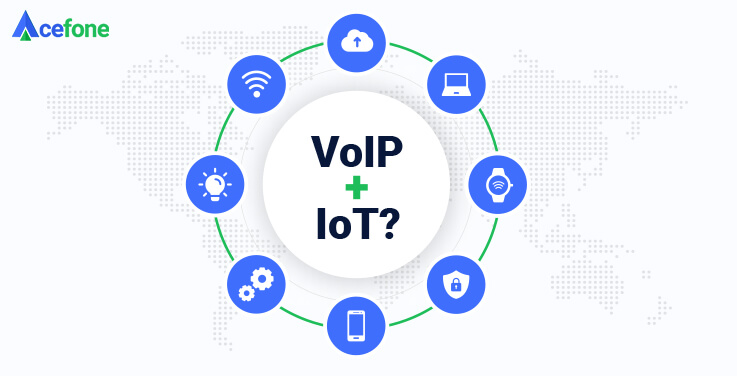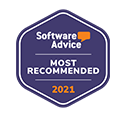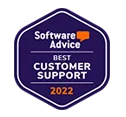To say that technology is advancing at a terrifyingly rapid pace would be an understatement.
It seems like yesterday when we would need data top-ups to be able to chat with our friends online.
Now we can talk to them via a video call in real-time even when we’re in different continents.
This has been enabled by something that the tech gurus like to abbreviate as VoIP or Voice over Internet Protocol.
Also, remember all those frustrating times when we would get into bed and pull up the covers only to realise that we left the lights on? Now, we’re equipped with the sheer brilliance of our favourite ‘Alexa’ or ‘Siri’, which can be configured to control the lights at the sound of our voice. This is an example of IoT or the Internet of Things.
So, what are these technologies exactly? We shall dissect these terms below and answer some of your questions about them.
We shall also discuss the future of these technologies, which lies in their integration and their impact on our lifestyle, whether in our homes or our offices.
Let’s get started.
What is VoIP?
Voice over Internet Protocol or VoIP refers to the collection of hardware components as well as software parts that allow data packets to travel over a network. In layman’s terms, VoIP enables voice, images and other data to travel from the transmitter to the receiver via the Internet. The technology replaces the heavy telephone lines that existed for legacy systems.
Since the development of VoIP and its foray into public usage in the early 2000s, VoIP has had a massive impact in terms of the advantages it offers:
- Cost savings as the technology runs via the Internet and one only incurs ISP (Internet Service Provider) charges as opposed to the infrastructural and maintenance costs of the multiple phone lines in a traditional phone system
- Remote access to VoIP phone services that allow employees to communicate and collaborate with their colleagues and counterparts from anywhere around the world, instead of only from within their boardrooms
- Extensive features offered by VoIP services in addition to the basic requirement of voice transmission over an IP network. These include caller ID, virtual numbers, contact lists, voicemail, etc.
- Ease of usage whether in terms of installation, configuration, integration, or maintenance of the IP network without the need to install any other infrastructure to the existing system
And this is only the beginning. If one were to go into detail, there are plenty of beneficial features and overall advantages of this technology.
What is IoT?
The term IoT or ‘Internet of Things’ refers to everything that is connected to the Internet and each other. This mutual connection helps these things ‘talk’ to each other. Currently, the scope of IoT has extended from just laptops connected via Intranet to the connection between additional devices such as sensors, smartphones, and wearables.
The scope of IoT now extends to connected cars, smart homes and smart office spaces, and even smart cities. Hewlett Packard predicted that the number of connected devices would grow from 9 billion in 2013 to at least 1 trillion in 2025.
The ramifications of a digital ecosystem capable of collating, analysing, and acting upon huge data loads are immense.
Following are some of the real-world ramifications of IoT :
- Smart homes encompassing connected lights, air conditioners, washing machines, smartphones and much more to make your life simpler and comfortable
- Connected cars that enhance the in-car experience for the passengers through temperature sensors, in-car support center, and more
- Smart office spaces to improve the productivity and efficiency of employees with an increase in the ease of work
- Industrial internet to empower industrial manufacturing and engineering through cutting edge analytics and innovative software
- IoT in healthcare includes connected healthcare systems and smart medical devices for better diagnosis and prognosis
IoT presents a rather diversified portfolio, and if researchers are to be asked, we’ve barely begun to scratch the surface.
The need for IoT-VoIP integration
VoIP systems have been a staple in smart office spaces for quite some time now, replacing the legacy analogue PGX systems. With the advent of IoT, there is an exciting opportunity to emboss VoIP phone systems with a layer (of IoT) and improve workspaces and employees’ lifestyle.
But what prompts this integration now?
It could be attributed to various factors that have made this time and this scenario ‘ripe’ for the integration to gain its foothold in present-day offices.
Firstly, it is attributed to the success of Industry 4.0, or what we called Industrial Internet. Industry 4.0 has revolutionised how industrial giants go about their business––incorporating big data analytics into everyday processes of manufacturing and production.
This use case wasn’t too far away from the confines of the office space, and these technological improvements are slowly finding their own niche in smart offices.
Secondly, both technologies are dependent on a common requirement for effective functioning––the IP-enabled core network. This natural synergy allows us to combine VoIP and IoT quite easily and effectively.
Very simply speaking, my calendar could be connected to my alarm over the same IP network, thus automating the activation of the alarm functionality whenever an important meeting or event is around the corner.
Thirdly and lastly, the pandemic has left the ‘normal’ office practices in shambles. As we gear up to go through the second wave, most of the companies worldwide are adopting a hybrid WFH policy for their entire employee base.
As per industry reports, over 75% of employees could end up working remotely by the end of this decade. This scenario demands innovative ways to ensure effective and real-time collaboration between employees, irrespective of whether they are at home or in the office.
Smart offices
Now that we have established the need for smart office spaces, we shall discuss the role played by IoT and VoIP integration in these set-ups and how they have a clear-cut advantage over the existing configuration.
-
Efficiency and performance
Integrating IoT with VoIP has a direct impact on those innumerable manual tasks that are important and, yet, quite redundant in themselves. Like, keeping your eye on the clock at all times so that you don’t miss that important meeting with the boss which is not even confirmed yet. Ring any bells?
Now, all you need to do is connect your email to your phone alarm system so that the required email from the relevant stakeholder sends a beep to your phone, and the alarm rings off to bring the meeting to your attention. No longer do you need to keep a constant watch on your watch, and you can focus on the more important things at hand––your work for the day.
The automation of such tasks shall reduce all that time you spend on manual interventions to nil, and your productivity shall be amplified automatically without any significant effort.
-
Connectivity and collaboration
VoIP had already created an ecosystem of collaboration between teams sitting miles away from each other by enabling voice transmission as well as video conferencing. The introduction of IoT shall maximise this ability by introducing more multi-faceted tools into the foray.
One such example would be the incorporation of augmented reality (AR) or virtual reality (VR) tools into the office space. Consider businesses with offsite client meetings.
In a standard scenario, an employee would need to carry all their resources for a meeting at a client location, However, with the integration of AR tools, any employee could access their office desk from any location via their phone and save the hassle of carrying those resources.
While this might sound a bit far-fetched, the possibilities are endless, and it is only a matter of time before holograms replace the old desktops gathering dust on our desks.
-
Maintenance and upkeep
Office maintenance is one of those underrated aspects of efficient smart office spaces which often tends to be overlooked by most of us. However, it is an essential requirement that needs proper implementation.
No one would like to work in an office where the thermostat constantly malfunctions, the printers are always running out of ink, and the water coolers can’t be trusted for a clean water supply.
This is where IoT and VoIP can play a significant role. Imagine leaving for the office and setting the thermostat to the required temperature on the way via your phone so that when you reach, the internal temperature settings are perfect for you to start your work––neither too hot nor too cold!
Similarly, printers and water coolers can be configured to send an alert to the correct person in case of repairs or refills. Cleanliness is Godliness, and rightly so.
Running out of necessary office supplies shall become a nightmare of the past as all the required repairs and refills shall be scheduled well ahead of time.
Summing it up
While VoIP and IoT are important technological advancements in themselves, their integration presents unparalleled opportunities to improve the lives of everyone who utilises them.
A smart workspace is such an avenue wherein the efficiencies of each employee can be multiplied without impacting their original work style. In fact, the integration allows them to function as effectively from the comfort of their homes as they did while sitting in the offices.
Our wish: to kill two birds with one stone!
To know more, get on-call with our cloud experts at 1888-859-0450 or drop an email at [email protected].

Yukti is a content marketing enthusiast with a soft spot for Saas. She loves weaving complicated concepts into simple stories. When not at work, she is found reading books or watching movies.














